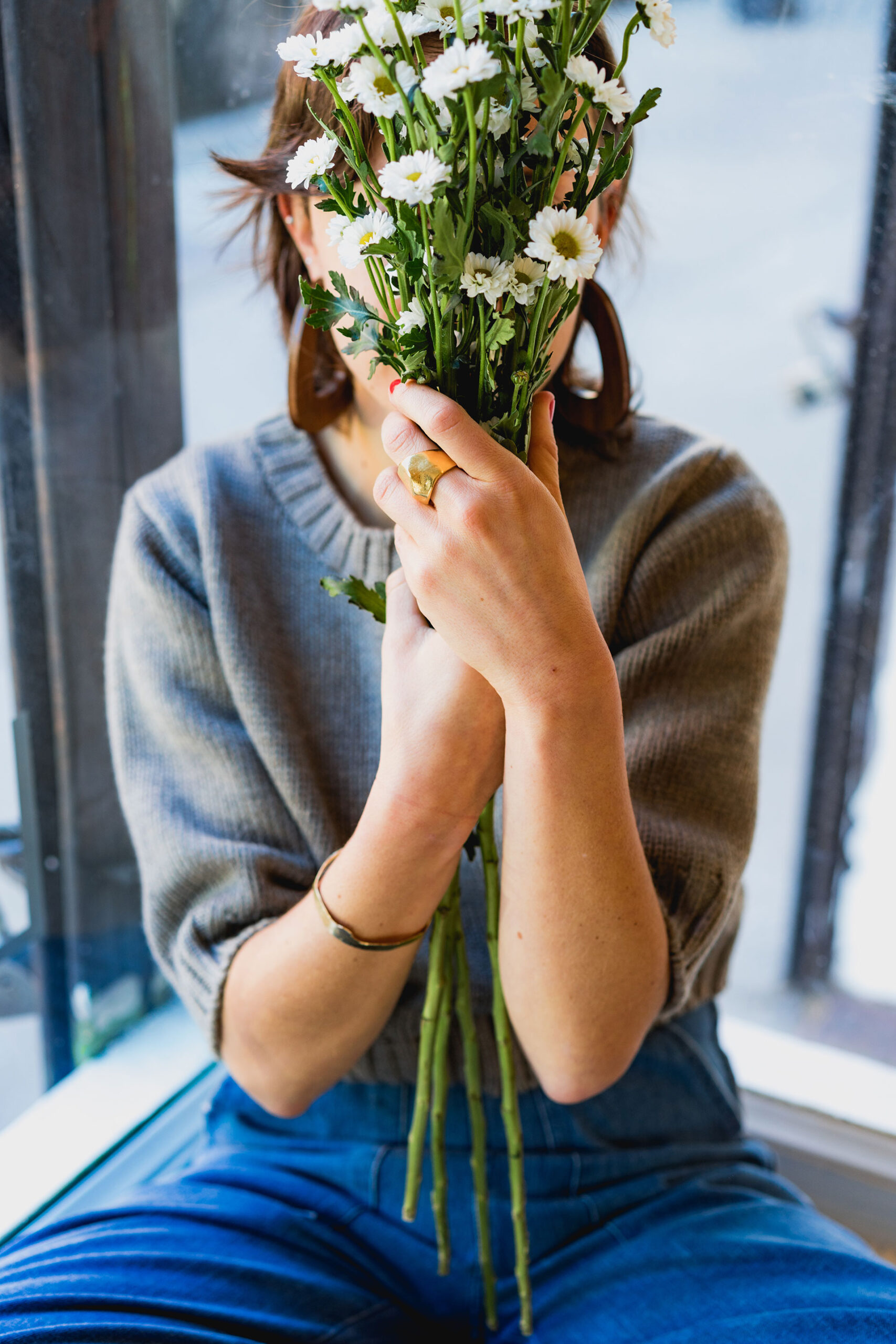£64.00 – £199.00Price range: £64.00 through £199.00
I love this tree. Crazy name for the most fabulous hard-working and beautiful Snow Gum. In fact, once established, the Jounama Snow Gum is the most garden hardy of ALL the Eucalyptus species. For all the jobs it can do for you – look at the ‘How to Use’ tab
If you are struggling with saying the botanical name – here’s my stab at it: pronounced Duh-burr-zee-vill-ee-eye. Frankly, life is too short to keep calling her Eucalyptus pauciflora subsp debeuzevillei, just call her the Jounama Snow Gum or in the nursery, we call them all Debi. See the Trivia tab for more details on this matter.
The Jounama Snow Gum is an exceptionally hardy, small to medium sized Eucalypt with bags of personality and attitude, great for winter garden interest
Why we like this variety:
Down to the nitty gritty – Debi (the Jounama Snow Gum) is a member and sub-species of the pauciflora (Snow Gum) group.
A good specimen variety, it grows to form a relatively small to medium sized tree or mallee with an attractive crown and the most amazing foliage and bark.
Grow Eucalyptus debeuzevillei as a beautiful standard tree as shown in the main photograph or train it as a multi-stemmed specimen and make the most of its amazing bark detail, by acquiring one of our young multi-stemmed trees.
Debi’s are also great in containers particularly as they are so hardy. Click here to learn more details on how to successfully grow Eucalyptus in containers.
For more information on how you can enjoy, use and manage this species – hop across to the tab called ‘How to Use’
Want to know more about its growing requirements, soil and sunlight etc. – visit the tab called ‘Planting Position and Soil’
If you follow our growing guidance notes, it takes about two full seasons to become established, before eventually shooting away strongly.
If you like this tree, but want something faster or taller? Check out its cousin Eucalyptus pauciflora subsp. pauciflora – White Sally.
Want something similar, but for a wettish clay soil? Check out Eucalyptus stellulata – Black Sally
Shoots ‘n Leaves: Young shoots and emerging leaves on young plants are a striking translucent copper crimson with a white bloom (protective wax), which is very attractive when back lit by the sun…like stained-glass windows
Juvenile foliage – bags of attitude. Huge, boxy, almost oblong angular blue leaves of an incredibly thick leathery texture – very substantial and wind resistant.
New growth of Eucalyptus debeuzevillei is always a carmine red colour and transluscent – like stained-glass windows.
Adult foliage is of a blue/green hue maturing sometimes to glossy olive green. Leaves are often broadly lanceolate with prominent lateral veins.
Bark: Beautifully patterned bark. Smooth, pearl grey to pure chalk white with an additional mosaic highlights of russet, cream, olive and silvery grey, which shreds in small flakes and ribbons from both the trunk and branches.
Great when under-lit at night. Excellent Winter-garden interest
Flowers: White flowers in groups of 9 to 15. Loved by honey bees.
Leaf Aroma: fruity eucalyptus, but not overwhelming because it is a snow gum – see trivia
Rate of Growth: Medium rate of growth at 1.0-1.5m per year, once established – takes a couple of years to get its roots down, so slow to take off.
Slow for a Eucalypt – still fast for an evergreen!
Height in maturity, if left unpruned: Eucalyptus debeuzevillei could reach approximately 8-10 m, after about 15-20 years.
Easy to keep smaller by regular pruning – March 18th and end of May. Can be grown as a bushy shrub – buy a multi-stemmed plant to achieve the bushy-shrub look.
Great in pots – visit the ‘How to Use’ tab
If pruned, it can be trained to form a bushy screening tree, a lollipop standard or a multi-stemmed bush like a species rose or coppiced Hazel tree.
Responds well to coppicing and pollarding, when done at the right time of year.
Unless you are growing for cut foliage, please refrain from voluntarily electing to prune your Eucalyptus from August through to February; it can kill it.
To receive monthly pruning and aftercare advice, sign up to our Gumnut Club – its free and you can unsubscribe at any time.
To subscribe – just call or ping us an email to [email protected]
Click here for a video on how to prune Eucalyptus
Click here to see our guidance notes on pruning with diagrams
Hardiness: Eucalyptus debeuzevillei, the Jounama Snow Gum is the hardiest of All Eucalyptus. Excellent hardiness rating, root-system should be happy down to around -18°C, once mature.
Eucalyptus debeuzevillei has been introduced to Norway – which is impressive!
Please note, if not encouraged to root deeply by planting correctly and given subsequent cultural support, younger trees are less tolerant of frost and may suffer exposure damage at low temperatures, in the early years.
Click here to see our Blog post on Hardiness in Eucalyptus.
Hardiness in Eucalyptus is governed by
We’ve written a deep-dive article on how you can keep your Euc happy and help it to become more hardy as it establishes in your garden.
Click here to read our guidance notes on Hardiness in Eucalyptus in the UK
Requirements:
Recommendations:
How to use in the landscape and/or garden: How to grow or train it to get the best out of it
The hardiest of all Eucalyptus once established. Fabulous colourful tactile bark, beautiful French-blue juvenile foliage, nice table manners. Great Specimen Tree or multi-stem tree for the wider landscape, arboretum collection or avenue planting and for the smaller, medium and larger garden.
Commercially: a good choice for open public spaces, parks, business parks, university campus
Growing a full-sized standard: planting the tree and running away is an option, but it won’t necessarily give you the best results.
We suggest you maintain a leading shoot and tip prune the lateral shoots to encourage bushiness. Keep all the sides shoots, but prune to control, as they are building up the strength of the main trunk.
For more, see our guidance notes for growing specimen Eucalyptus in our Help and Advice section and our Pruning Guidance Notes in our Blogs.
For monthly emails on how and when to prune and care for your Eucalyptus, sign up to our Gumnut Club and we’ll send you the Bush Telegraph – it’s totally free and you can unsubscribe at any time.
Growing shrub-on-a-stick clipped standard: this is an opportunity to grow a Eucalyptus in a confined space like a courtyard and also control its overall size. You can produce a small tree on a trunk with a height of anywhere between 2.4m (8ft) and 4m (12ft). Prune back growth every March 18th or thereabouts and tip prune the annual growth back by up to 90% at the end of May. Light tip pruning can be done again during July, but no later. Don’t prune from August through to February.
Growing a multi-stemmed bush or tree. Eucalyptus pauciflora subsp. debeuzevillei will respond to coppicing and readily produces a multi-stemmed specimen, BUT ONLY once it has attained a trunk of some 125 mm in diameter. However, it is a snow gum and they generally do not enjoy regular, aggressive pruning practices such as pollarding and coppicing – so perhaps only every 5 years or so. By all means light prune it annually.
Coppicing and Pollarding – Why would you want to do this?
To create:
REMEMBER: No grass, no weeds and a thick, boring (no frills) bark chip mulch, to a depth of 150 mm (6 inches) are essential to assist with good establishment. Our research trials have demonstrated that grass around the trunk of Eucalyptus prevent the trees from quickly establishing and can completely stop them from growing.
Pot Culture outdoors: Eucalyptus pauciflora subsp. debeuzevillei is an excellent choice and can be successfully grown as a multi-stemmed shrub in a container provided you are prepared to pot on at the recommended intervals and to supply it with sufficient water and food during the growing season.
Tip: prune back new spring growth on every shoot by 50% during the 1st week in June to keep a compact bushy habit. More serious pruning can be done earlier in March (National Eucalyptus Day is March 18th).
Always keep pot-grown Eucalyptus in the air-pot container system for healthy and happy trees.😊 They do not thrive in smooth-walled containers ☹
For Guidance Notes on how to successfully grow Eucs in pots, visit our Blog entitled ‘How to grow a Eucalyptus in a pot and keep it alive!’
Hedge-Screens: Eucalyptus pauciflora subsp. debeuzevillei is a good choice for a hedge-screen as it readily produces sub-lateral shoots – i.e. branches off the side-branches and finds no problem in becoming bushy. This is unusual for most Eucs.
Always prune your hedge-screen March 18th and maintain a profile like a capital ‘A’. That is broad bottom, narrow shoulders and a flat head. This allows light to all parts of the hedge and keeps it bushy. If you let your hedge develop into the shape of a capital ‘V’, its bottom will open up…not a great look!
Floral Art: Eucalyptus pauciflora subsp. debeuzevillei is not on our ‘Cut foliage’ list, but I see no reason why you could not use the odd branch in a vase of flowers. Its large juvenile leavess look great with Paeony, Hydrangea and Dahlias
Firewood Production: Eucalyptus pauciflora subsp. debeuzevillei is not on our selected species list for Biomass or Firewood. Snow gums are too slow growing to make them viable for cropping. However, their wood does burn well – it’s very dense..
Do give us a call on our nursery mobile 07307 413 052 if you would like to discuss growing firewood with one of our consultants
Rural/Agricultural:
Ecology:
Environmental:
We recommend
Current stock
Nursery Notes: For some unknown reason, we find a few Eucalypts resent being grown in very small nursery pots – they don’t thrive and ‘Teddy gets thrown out of the pram’! E. debeuzevillei is one such and therefore are generally only available in 5 litre pots upwards. We grow most of them as multi-stems as we find this produces a very pleasing form. Beautiful standards are also available.
Botanical Name: Eucalyptus pauciflora subsp. debeuzevillei, syn. E. debeuzevillei
pronounced Duh-burr-zee-vill-ee-eye
Common Name: Jounama Snow Gum
Status: Evergreen Tree MYRTACEÆ; Myrtle Family
Lignotuber: it has one, which is a good thing! E. debeuzevillei will regenerate off the lignotuber if cut down by man, beast or nature. It also produces many shoots from epicormic buds lying dormant beneath the bark higher up the tree; so E. debeuzevillei will respond to both coppicing and pollarding practices, once large enough to tolerate it. However, remember it is a snow gum and won’t like frequent, aggressive pruning practices – so not too often please!
What is a lignotuber? See our Blog post on the subject here: https://www.hardy-eucalyptus.com/lignotuber-on-toast-anyone/
Origin: Native of the sub-alpine habitats of Eastern Australia, Jounama Peaks of New South Wales, but also grows in lowland habitats, where they are sometimes known as White Sallee.
Meaning of the name:
Eucalyptus pauciflora: Latin pauci-, few and florus, flowered, of the inflorescences, a misnomer.
subsp. debeuzevillei: after Wilfred Alexander Watt de Beuzeville (1884–1954). Wilfred de Beuzeville was born in Bombala, New South Wales, and spent his early career with the Forestry Commission of that state working initially in Warialda, later becoming District Forester at Tumut and eventually working with the Forest Products Division of CSIR. He published a book Australian Trees for Australian Planting (1947), and scientific papers. He was an experienced botanist and ecologist and collected numerous eucalypt specimens, often sampling variation in a species at a locality or across altitudinal gradients. (source: Euclid)
The origin of the name Beuzeville is unknown; however the 19th century French historian Charpillon suggests that Beuze was derived from Boson, an influential family in early Norman times
Interesting Notes:
The Snow Gums are members of the Blue-leaved Ash groups of Eucalypts, preferring free draining soils. Mainly from mountainous regions, they are very well adapted to survive harsh winter conditions. Strikingly flexible branches bend almost to vertical in heavy snow, to avoid snapping and to shed the load. New growth can be weeping in habit until later summer, when it lays down fibre and becomes more upright.
They are a slower growing member of the Euc clan. Their growth is considered and their wood is very dense
If cut down by excessively harsh weather conditions they can not only grow back through their seed (but only in Australia, not in the UK), but trees can produce epicormic shoots from buds lying dormant beneath the bark and also from lignotubers. E. pauci. subsp debeuzevillei has a lignotuber (a woody doughnut like structure where the trunk meets the root plate), which will generate new growth if the tree is coppiced. However, the Snow Gums do not respond well to regular, aggressive coppicing.


